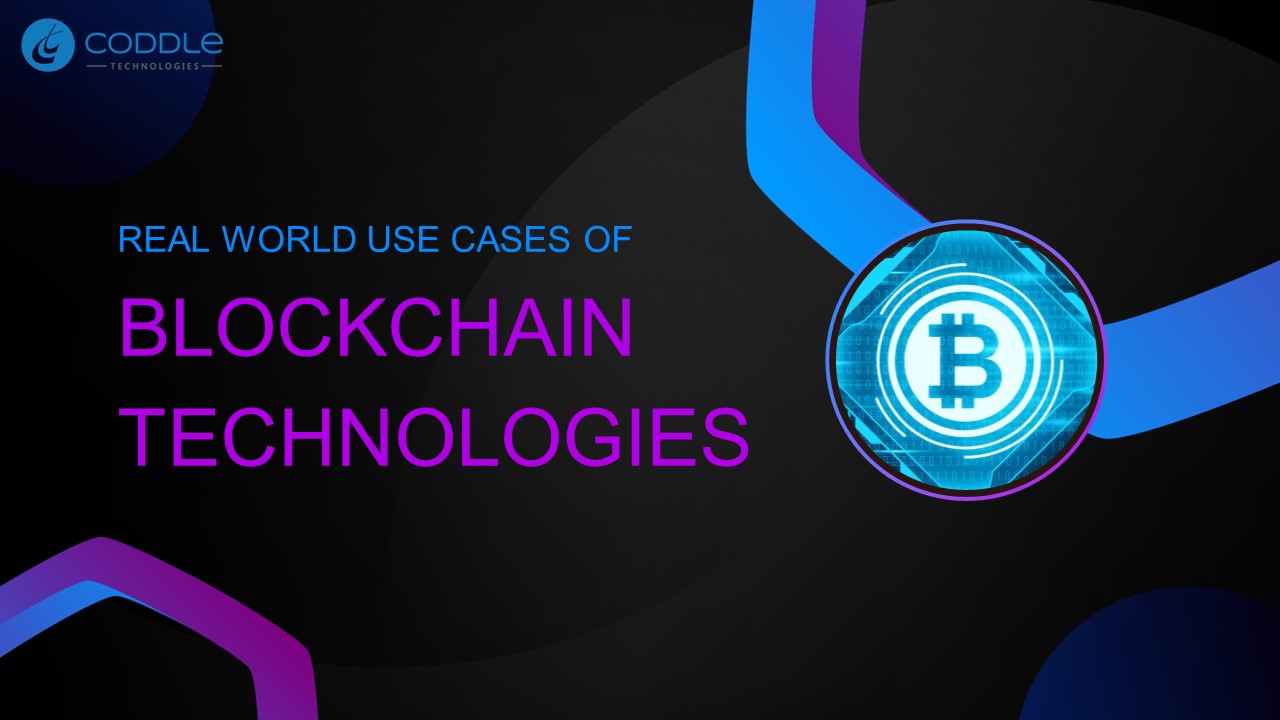Real world use cases of Blockchain Technology PowerPoint PPT Presentation
Title: Real world use cases of Blockchain Technology
1
REAL WORLD USE CASES OF
BLOCKCHAIN TECHNOLOGIES
2
Blockchain Technology
Blockchain technology has applications across
various industries, offering solutions to
long-standing problems.
Blockchain technology has found numerous
real-world use cases across various industries
due to its unique features like decentralization,
transparency, and security.
3
Crypto Currencies
- Bitcoin (BTC) The original and most well-known
blockchain application, Bitcoin is a
decentralized digital currency that enables
peer-to-peer transactions without the need for
intermediaries like banks.
4
Smart Contracts and Decentralized Apps (DApps)
- Ethereum (ETH) Ethereum introduced the concept
of smart contracts, self-executing contracts with
the terms directly written into code. This allows
for the creation of decentralized applications
and various blockchain-based services.
5
Supply Chain Management
- Blockchain is used to enhance transparency and
traceability in supply chains. Each step of the
supply chain, from manufacturing to distribution,
can be recorded on a blockchain, reducing fraud
and ensuring the authenticity of products.
6
Identity Management
- Blockchain can provide a secure and decentralized
solution for identity management. Users have more
control over their personal information, reducing
the risk of identity theft.
7
Cross-Border Payments
- Blockchain technology can streamline cross-border
payments by reducing the need for multiple
intermediaries, making transactions faster and
potentially less expensive.
8
Voting Systems
Blockchain can be applied to create secure and
transparent voting systems. This can reduce the
risk of fraud and enhance the integrity of
election processes.
9
Healthcare Data Management
Blockchain helps secure and manage healthcare
data. Patients can control access to their
records, and healthcare providers can improve the
accuracy and privacy of patient information.
10
Real Estate Transactions
Blockchain simplifies and secures real estate
transactions by providing a transparent and
tamper-resistant ledger for property ownership.
It reduces the risk of fraud and speeds up the
process.
11
Intellectual Property Protection
Blockchain is used to timestamp and verify the
ownership of intellectual property, including
patents, trademarks, and copyrights.
12
Food Safety and Traceability
Blockchain is applied to track the production,
processing, and distribution of food products.
This ensures transparency and allows for quick
identification of the source in case of
contamination.
13
THANK YOU
For watching this presentation

